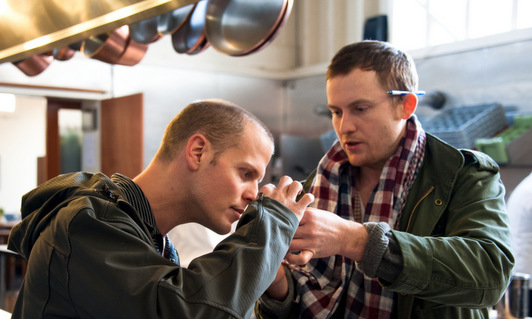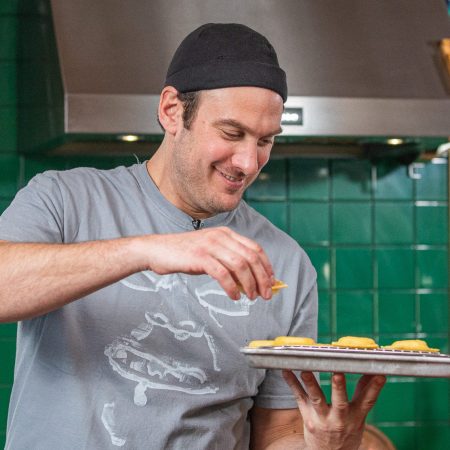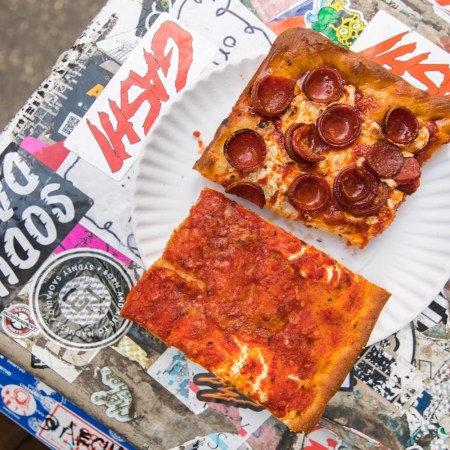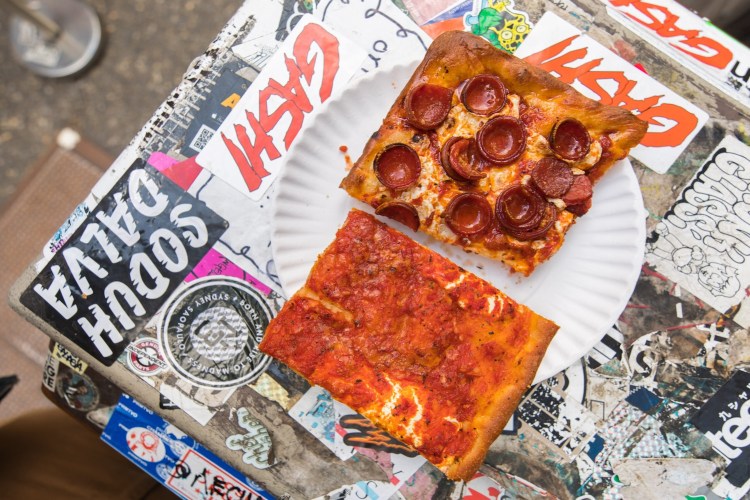Tim Ferriss is his own lab rat.
The author/lifestyle designer hacked his body to add 34 pounds of muscle (and revealed the secrets to amazing sex) in “The 4-Hour Body.” He deconstructed his life to attain “The 4-Hour Workweek,” his first bestseller.
Now, he wants to …. cook. Specifically, with his new book “The 4-Hour Chef,” he wants to show you how his own system of learning can be applied not only to mastering Michelin star-quality food, but any skill in life. Like speaking Indonesian. Or becoming a sniper.
Bon appétit.
Tim, you’ve called yourself an idiot — at least where cooking’s concerned. So, why this book?
Cooking is a dojo of human potential in a really weird way. It involves all the senses, so it’s perfect for training people to improve a skill. And I felt a digital malaise coming on. I wanted to use my hands, reclaim my humanness. Woodworking wasn’t going to do it.
[callout] … I deliberately avoided the high probability of failure. I borrowed that advice from Warren Buffett.[/callout]
The recipe in the book called “DiSSS.” That’s the dojo?
Yeah, it’s a cookbook for all skills, not just food. It’s Deconstruction — picking out Lego blocks of the skill. Selection: focusing on the 20% of the process that gets 80% of the results. Sequencing: putting things in a logical progression. And then the stakes: using a carrot or a stick to get you to follow through.
So, besides cooking …
I applied these methods to languages. I mean, I failed Spanish when I first took it, but when I decided to learn Japanese with this method, I was fluent in a year. And, admittedly, a lot of that was through reading judo textbooks and comic books.
You worked with some amazing chefs, from Jean-Georges to molecular gastronomists. Was there any style of cooking you weren’t able to master?
No, and I’ll tell you why. I deliberately avoided the high probability of failure. I borrowed that advice from Warren Buffett. I chose recipes with the highest tolerance for mistakes.
What’s one recipe from the book a guy has to know?
The very first recipe in the book. It’s a variation of ossobuco. Always an expensive menu item at a restaurant. But if you tweak it, it’s easy to make. It’s five minutes of prep time! I’ll tell it to you right now: get a cast-iron pot, 3-4 lamb shanks, one bunch of carrots — just scrub and break ‘em in half, one can of whole tomatoes, some garlic cloves, two glugs of olive oil, three-quarters of a bottle of white wine. Put on a bunch of salt and pepper, cover it, cook on 350 for two hours. I served it to a guy who considers himself a foodie … he was blown away.
[callout] … I just did sniper training with the L.A. SWAT team. I think I can apply these skills to that. [/callout]
So Malcolm Gladwell. He famously said it takes 10,000 hours of practice to be an expert in something. You’re saying you don’t need that much, right? Are these ideas incompatible?
Malcolm is a smart guy. I’m defining mastery as being in the top five percent of something. With that definition, you can become a world class master in one or two things per year. You can “master” 99% of a language in a year. To get to 99.9% level of mastering … that’s a long, personal decision, one that a lot of people would be fine not making.
How are you going to apply these skills next?
I just did sniper training with the L.A. SWAT team. I think I can apply these skills to that. Also, I want to learn a few more languages, like Indonesian. And maybe surfing.
The 4-Hour Chef is on sale now exclusively through Amazon Publishing. Bonus: Buy three print copies of the book and e-mail your receipt to 3books@4hourchef.com, and you’ll get an invite to a live two-hour Q&A from Tim.
This article was featured in the InsideHook newsletter. Sign up now.

























